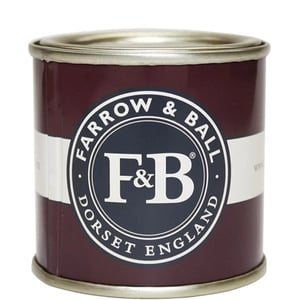Farrow and Ball Ammonite or Cornforth White
Two of the most popular Farrow and Ball neutral colours, are soft grey shades Ammonite and Cornforth White. Similar but different in so many ways, making it a tricky decision to choose between each so we’ve pulled together a handy guide to help you make the difficult decision, of choosing the perfect neutral colour.
Farrow and Ball Ammonite
Ammonite is described by Farrow and Ball as a ‘naturally understated grey’. Its name is inspired by fossils found on the Dorset coast, home of the Farrow and Ball brand. It creates a calm, hushed feeling to any space and is neither cool nor warm-toned.
Shown here with Ammonite on top and Purbeck Stone below, you can see the versatile shade of grey that almost looks off-white against darker tones.


Farrow and Ball Cornforth White
Cornforth White is similarly described by Farrow and Ball as an ‘understated grey’ but also as a ‘mid-tone’ neutral which means it’s a fraction stronger than Ammonite. Named after John Cornforth, the highly regarded architectural historian, it truly is a versatile neutral.
Shown here in a tranquil sitting room paired with Farrow and Ball Pointing.


Farrow and Ball group Ammonite and Cornforth White together with Purbeck Stone in a palette named, ‘Easy Grey Neutrals’. Ammonite is the light tone, Cornforth White is the mid tone and Purbeck Stone is the strongest tone. Each shade in the ‘Easy Grey Neutrals’ palette is recommended to be paired with the white shade, Farrow and Ball Wevet as they all have a shared undertone and will sit together harmoniously.
Shown here as a trio with the coordinating white, Wevet, you can see the subtle differences between each shade and how well Wevet compliments the palette.

Choosing the Perfect Shade
Finding the perfect colour for your next painting project is no small task. Colours can look very different in different lights throughout the day and in different room orientations so we always recommend buying a sample pot to try at home first.



